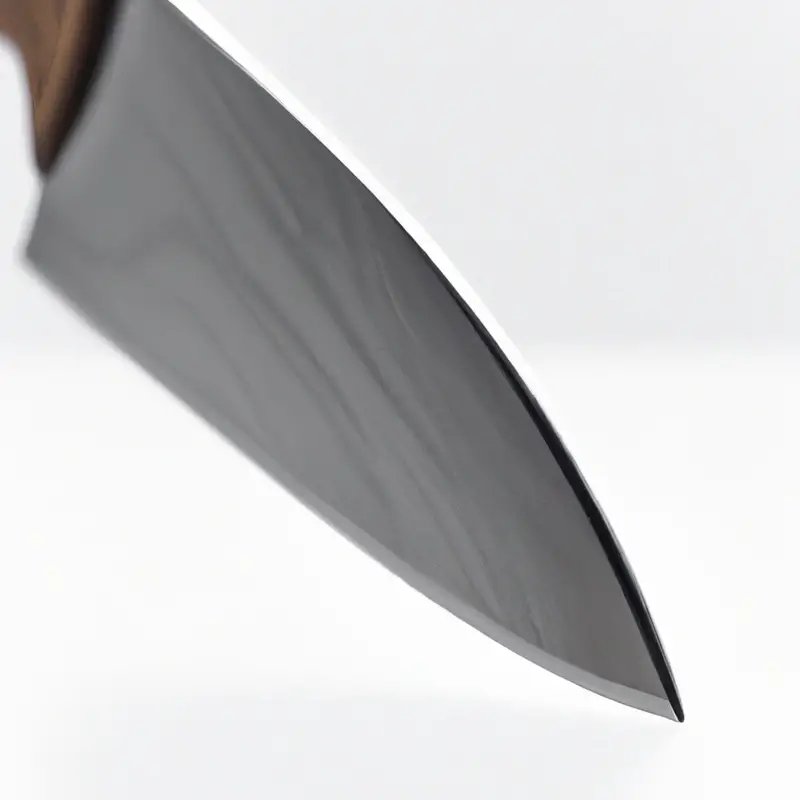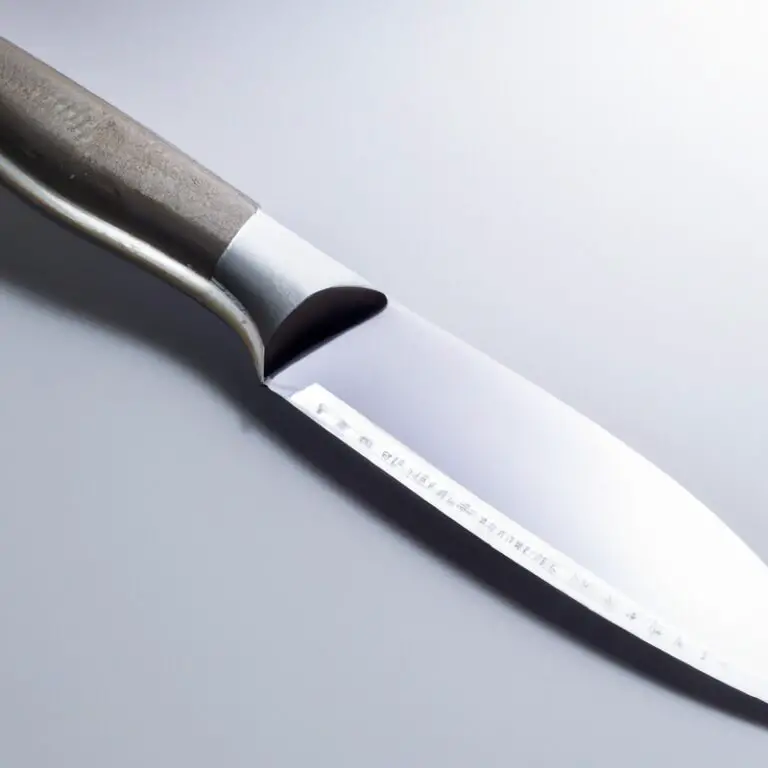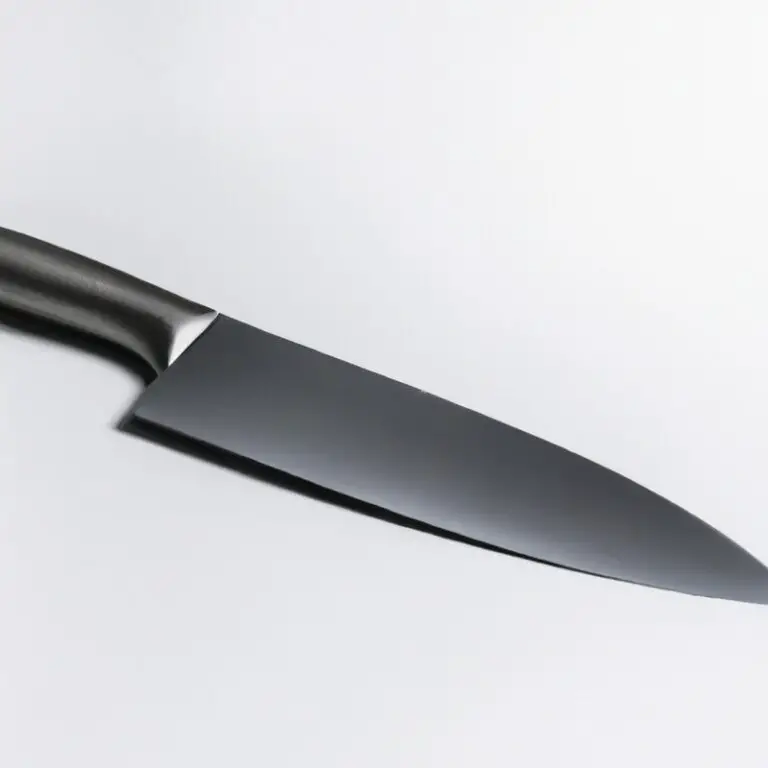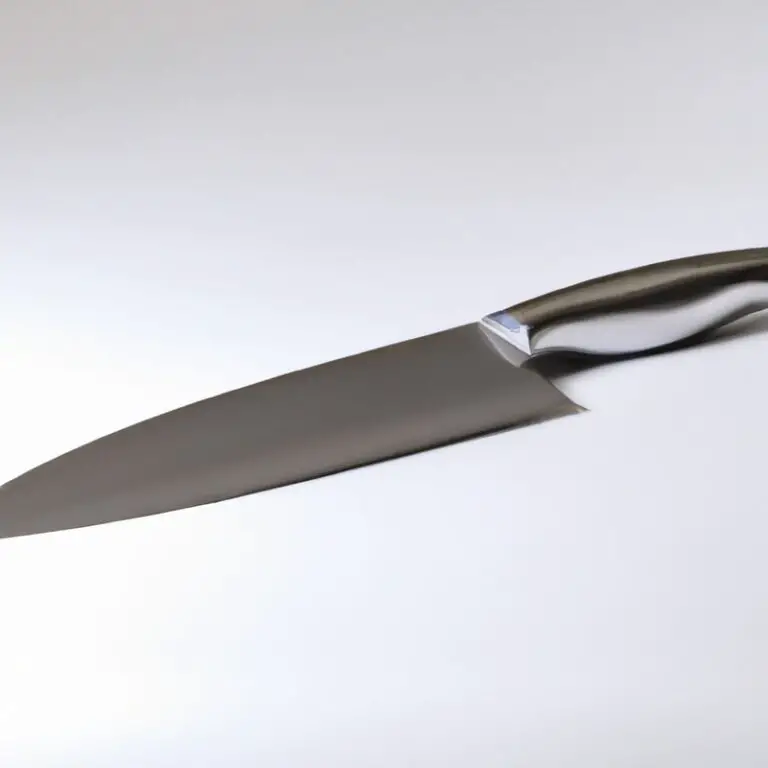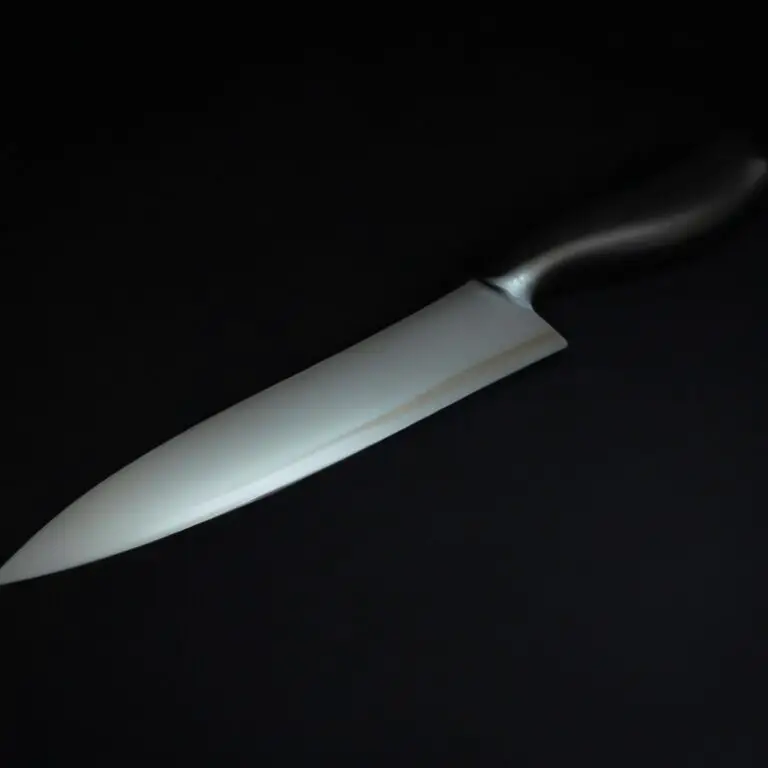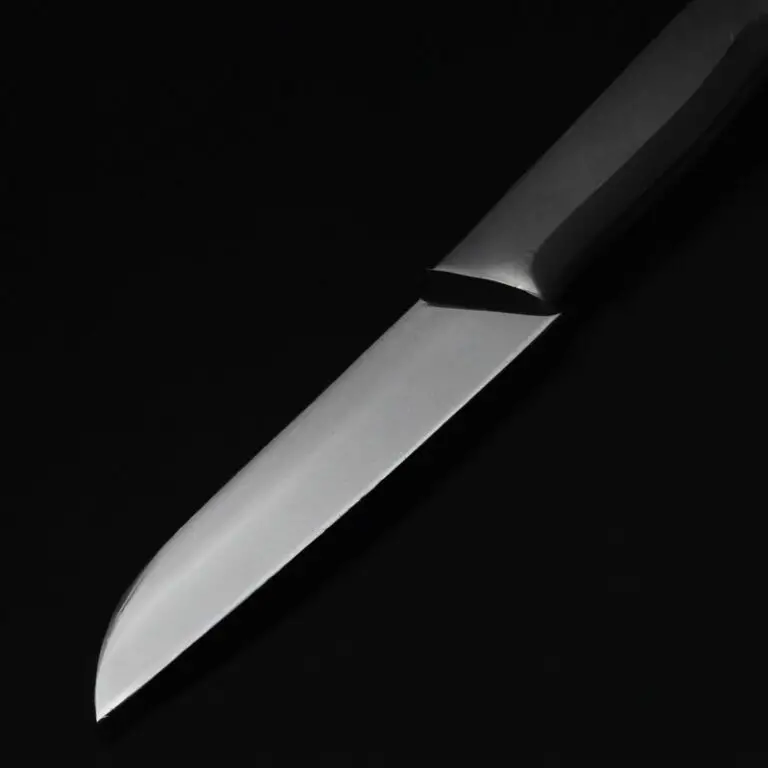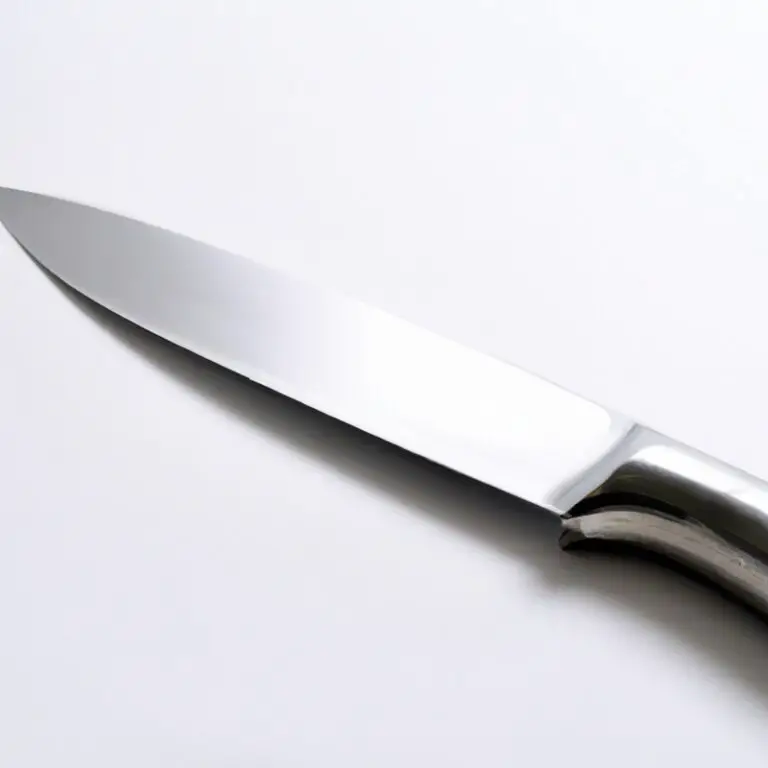Are Santoku Knives Suitable For Boning Meat? Answered!
Key Takeaways:
- Santoku knives are not the best option for boning meat due to their narrow, flat blades.
- The lack of a pointed tip on Santoku knives makes it difficult to navigate around bones during the deboning process.
- It is recommended to use a specifically designed boning knife for best results when working with meat.
- While Santoku knives are versatile in the kitchen, it’s important to choose the right knife for the job at hand to ensure efficient and safe cooking practices.
Meat boning is one of the essential tasks in every kitchen. And for that, having the right knife is crucial.
Santoku knives are versatile and popular for their unique design, blade construction, and balance.
But can a Santoku knife be used for meat boning? As a culinary expert, I have explored and experimented with Santoku knives for this purpose.
In this article, I’ll share my insights on whether Santoku knives are suitable for meat boning, their pros and cons, tips for proper usage, and more.
Keep reading to find out if a Santoku knife is the right choice for your meat boning needs.
| Santoku Knife | Boning Knife | |
| Blade Shape | Flat blade with less curvature | Narrow, curved blade |
| Blade Size | Shorter and wider blade (between 5-7 inches) | Taller and narrower blade (between 5-7 inches) |
| Precision | Excellent for slicing and dicing | Excellent for separating meat from bones |
| Weight | Lightweight | Heavier |
| Price | Relatively inexpensive | More expensive |
| Versatility | Multi-purpose knife; suitable for a variety of cutting techniques | Specialized for boning meat only |
Understanding Santoku knives: Anatomy, features, and uses
Santoku knives are a popular type of Japanese knife that is designed for general kitchen use. Compared to Western-style knives, Santoku knives have a shorter, wider blade with a straighter edge.
This unique shape allows for greater precision and reduces the risk of food sticking to the blade.
Anatomy: The blade of a Santoku knife typically ranges from 5 to 7 inches in length, with a spine that gradually tapers down to a sharp tip. The edge of the blade is typically flat or slightly curved and has a blunt tip.
The handle of a Santoku knife is usually made of wood or composite materials and is designed to fit comfortably in the hand.
Features: The unique shape and design of Santoku knives offer several advantages over other types of knives. They are well-balanced and easy to maneuver, making them ideal for precision cutting.
Additionally, their wide blade makes it easier to scoop up food and transfer it from cutting board to pan.
Uses: Santoku knives are versatile and can be used for a variety of kitchen tasks, such as slicing, dicing, and chopping fruits, vegetables, and meats. However, they may not be the most suitable option for boning meat as their wider blade may struggle to fit into tight spaces.
Santoku knives are versatile kitchen tools that are great for general use, but may not be the best option for boning meat.
It’s important to choose the right knife for the job and to properly maintain and sharpen it for optimal performance.
Meat boning: Methods and techniques
Meat boning is the process of removing the bones from a cut of meat. It requires a combination of skill, precision and the right tools.
There are various methods and techniques involved in meat boning, including:
- Deboning with a knife: This method involves using a knife to cut around the bone, separating it from the meat.
- Deboning with a saw: This method involves using a saw to cut through the bone and remove it from the meat.
- Filleting: This method involves removing the bones from a fillet of meat such as fish, with a sharp knife.
- Butterflying: This method involves cutting a piece of meat to open it up like a book to make it thinner and more even.
It’s important to note that each method requires a specific type of knife, and using the wrong knife can result in injuries or damage to the meat. While Santoku knives are versatile and efficient in many tasks, they are not specifically designed for boning meat and may not be the best option.
It’s essential to use a boning knife, which has a narrow, rigid blade that enables easy maneuvering and control.
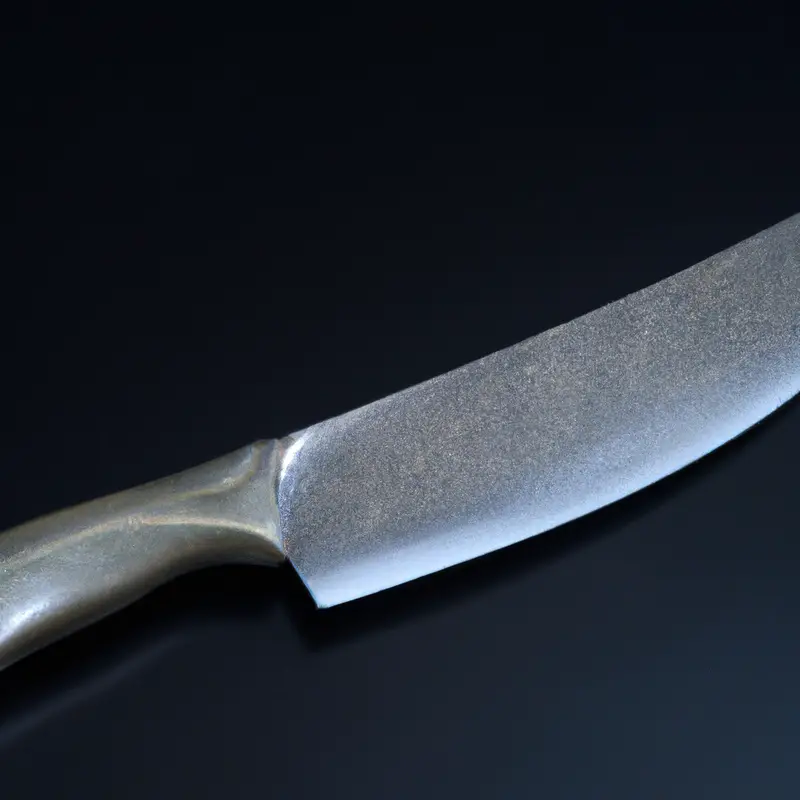
Can Santoku knives be used for boning meat?
Yes, Santoku knives can be used for boning meat, but it is not their primary use. Their design makes them better suited for slicing, dicing, and chopping vegetables, fruits, and boneless meats.
Additionally, their wide blade profile makes them less agile and difficult to navigate around bones compared to traditional boning knives.
However, if you do not have a boning knife, and only have a Santoku knife, you can use it for boning. Just be aware of its limitations, and use extra caution when cutting near bones to avoid injury and damaging your knife.
The pros and cons of using a Santoku knife for meat boning
Pros:
- The wide, flat blade of a Santoku knife provides excellent control and leverage for maneuvering around bone.
- The sharp, angled edge can make precise cuts, allowing for clean separation of meat from bone.
- The versatility of a Santoku knife makes it a useful tool for other kitchen tasks beyond boning.
Cons:
- Santoku knives are not designed specifically for boning, meaning they may not have the flexibility or narrowness required for some cuts.
- The flat blade may not be able to reach tight spaces, such as joints or cartilage, as easily as a curved blade.
- Santoku knives may not have the durability required for frequent use in heavy-duty meat boning.
Overall, while a Santoku knife can be a useful tool, it may not be the best choice for heavy-duty meat boning or specific cuts that require a more specialized knife. It’s important to choose the right tool for the job and consider the specific needs and requirements of your meat boning tasks.
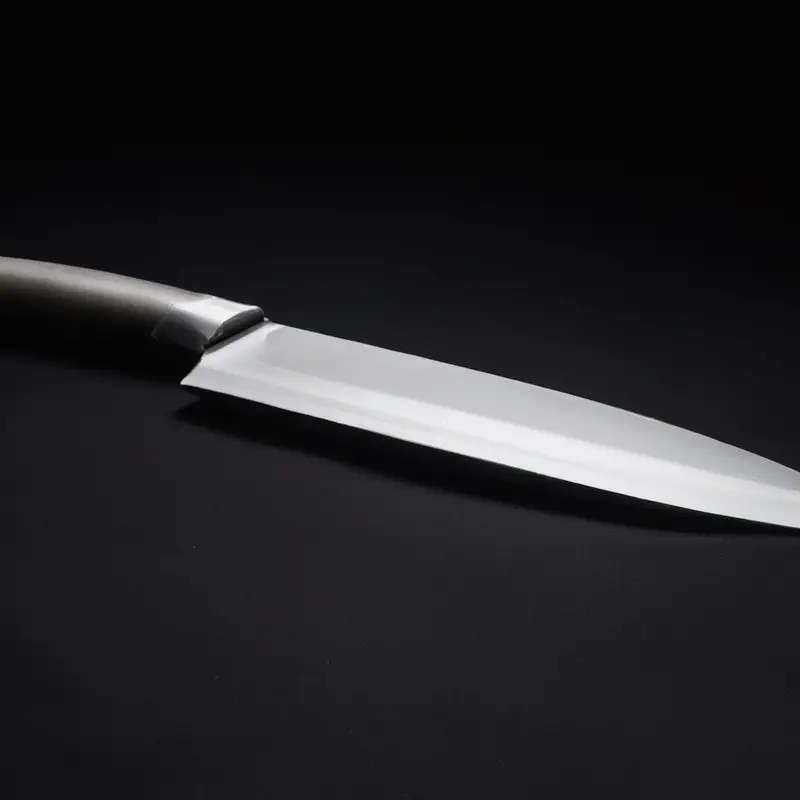
Which cuts of meat are best suited for Santoku knives?
Santoku knives are versatile and can be used on different types of meat, but certain cuts are better suited for them than others. The best cuts of meat for Santoku knives include boneless chicken breasts, boneless pork loin, fish fillets, and vegetables.
However, for tougher cuts of meat with bones, it is recommended to use a specialized boning knife for easier maneuvering around the bones.
When using a Santoku knife for meat, choose cuts that are suitable for its size and shape, as it works better on flatter surfaces.
How to sharpen and maintain your Santoku knife for meat boning
To maintain the sharpness of your Santoku knife, it is important to regularly hone and sharpen it. Honing the knife involves using a honing rod to straighten the blade’s edge, while sharpening involves removing material to create a new edge.
To hone your Santoku knife, follow these steps:
- Hold the honing rod vertically on a stable surface.
- Place the edge of the Santoku knife against the rod at a 20-degree angle.
- Starting at the base of the blade, pull the knife down the rod in a sweeping arc to the tip. Repeat this process on the other side of the blade.
- Alternate sides and repeat the process about 5-10 times per side.
To sharpen your Santoku knife, use a sharpening stone or a knife sharpener. Follow these steps:
- Place the sharpening stone on a stable surface.
- Hold the Santoku knife at a 15-20 degree angle.
- Using even strokes, move the knife across the stone, starting at the base of the blade and moving towards the tip.
- Flip the knife over and repeat the process on the other side of the blade.
- Alternate sides and repeat the process until the knife is sharp.
In addition to honing and sharpening, it is important to properly maintain your Santoku knife. Here are some tips:
- Always handwash your Santoku knife and dry it immediately.
- Store the knife in a block, sheath, or on a magnetic strip.
- Avoid cutting on hard surfaces like glass or metal.
- Use cutting boards made of wood or plastic.
- Do not use the knife to pry open containers or remove staples.
By properly honing, sharpening, and maintaining your Santoku knife, you can ensure it remains sharp and ready for the task of meat boning.
The importance of choosing the right knife for the job
Choosing the right knife for the job is paramount in achieving precision, accuracy, and safety. A knife that is not designed for a specific task can result in injuries, damage to the blade, and deterioration of the quality of the food.
When it comes to meat boning, using the right knife is crucial to achieving a clean and effortless cut.
Santoku knives are versatile and have various applications, but they are not designed for boning meat. A specialized boning knife will perform better and yield better results.
Therefore, it’s important to choose the right knife for the job to achieve optimal results, ensure safety, and protect the longevity of your knife.
Other popular knife options for meat boning
Other popular knife options for meat boning include:
- Boning knife: This knife has a narrow blade that makes it easy to curve around bones and trim meat close to the bone. The flexible blade allows for more precise cuts and greater control.
- Fillet knife: A fillet knife is traditionally used for fish, but it can also be used for boning meat. Its long, narrow blade is ideal for cutting along bones and removing skin and scales.
- Butcher knife: As its name suggests, this knife is designed for butchering and cutting meat. Its broad blade and thick spine allow for more force, making it easier to cut through large pieces of meat or bone.
- Cleaver: Although often associated with chopping bones, a good quality cleaver can also be used for separating large pieces of meat and trimming fat.
When choosing a knife for meat boning, it’s important to consider the type of meat you’ll be working with, as well as your personal preferences in terms of size and weight. Additionally, the sharpness and quality of the blade are crucial factors, as a dull blade can cause injury and make the task more challenging.
Expert tips for properly boning meat with a Santoku knife
Expert Tips for Properly Boning Meat with a Santoku Knife:
- Grip the knife correctly: Hold the handle with your dominant hand and place your index finger along the top of the blade for better control.
- Use the tip of the knife: Santoku knives have a sharp, curved tip that is perfect for separating meat from bones. Use it to make precise cuts.
- Work with the natural contours of meat: Follow the contours of the bone, and slice away from the bone to avoid separating muscles.
- Cut against the grain: To make the meat more tender, cut against the direction of the muscle’s grain or fibers.
- Keep the blade sharp: Use a honing steel or sharpening stone to maintain the sharpness of your knife.
- Use a cutting board: Always use a cutting board when working with meat, and ensure it is stable and secure.
- Work in a well-lit area: Good lighting helps you to see what you are doing and avoid accidents.
- Clean as you go: Clean the knife and cutting board after each use to avoid cross-contamination.
Following these tips will help you to use a Santoku knife effectively and safely for meat boning. Remember to always prioritize safety and maintain the knife regularly to ensure it remains in optimal condition.
Safety precautions to take when using Santoku knives for meat boning
When using a Santoku knife for meat boning, safety should always be a priority. Here are some essential precautions to take:
- Always use a cutting board to avoid accidents and maintain the blade’s sharpness.
- Keep your fingers away from the blade, and use a grip technique that keeps your fingers and thumb behind the blade.
- Avoid using excessive force when cutting and use a sawing motion to make precise cuts.
- Always cut away from your body, keeping your opposite hand away from the blade.
- Ensure that the blade is sharp before using it for meat boning, as a dull blade can slip and lead to accidents.
- Store the knife in a safe and secure location when not in use.
By following these safety measures, you can ensure that your Santoku knife performs efficiently and safely when boning meat.
Final Verdict
While Santoku knives can be used for meat boning, it is not their primary function. While they can handle some cuts of meat, using a Santoku knife for boning larger or tougher cuts of meat can cause damage to the blade and increase the risk of injury.
It is important to choose the right tool for the job.
However, with proper technique, a sharp blade, and careful attention to safety, a Santoku knife can be a valuable addition to your meat preparation routine. Always remember to properly maintain and sharpen your Santoku knife to ensure its longevity and performance.
By implementing these expert tips, you can safely and successfully use a Santoku knife for meat boning.
Choose wisely, use carefully, and enjoy the ease and precision of the Santoku knife.

